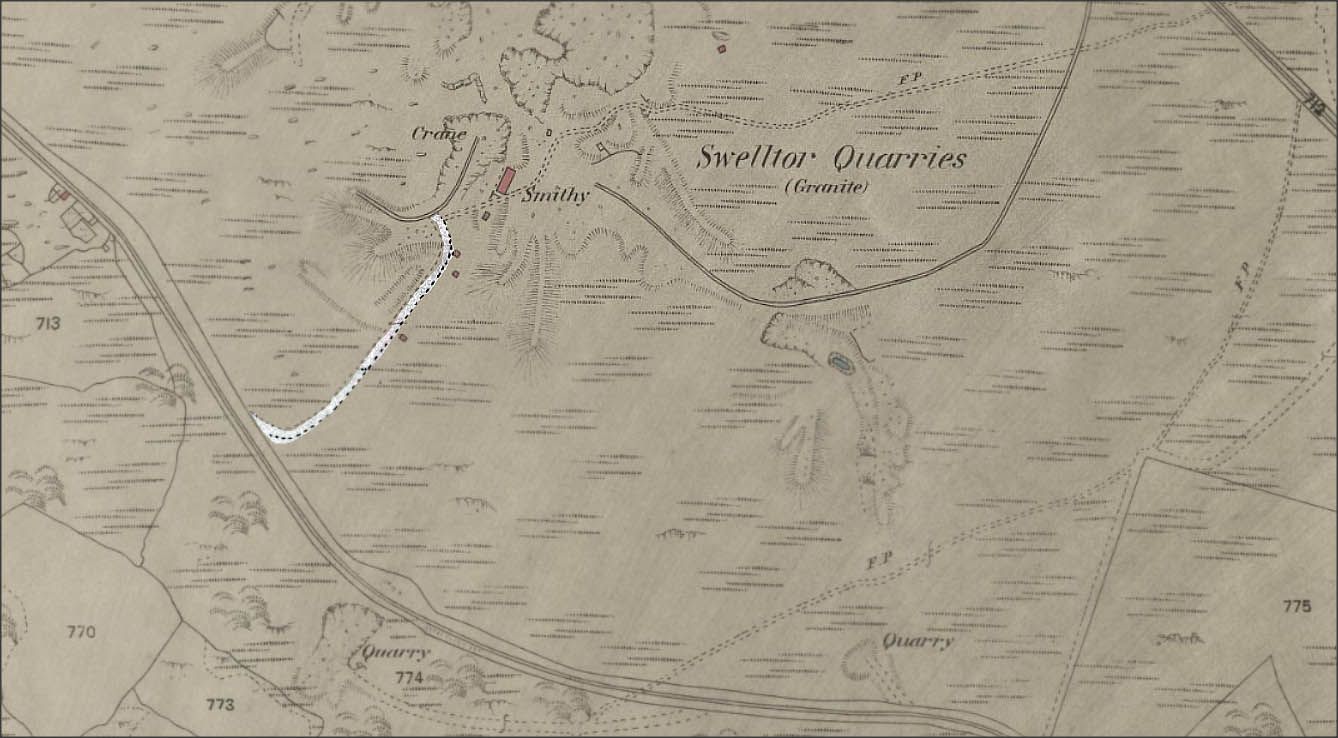About Foggintor Halt
Foggintor Halt was a small, unstaffed stop on the Princetown Railway, primarily serving the nearby quarries and offering access to the desolate moorland of Dartmoor. Located near the disused workings of Swelltor Quarries, the halt was part of the effort by the Great Western Railway (GWR) to boost traffic along the line, particularly targeting hikers and quarry workers.
The track around Foggintor Halt passed through rugged terrain, with views dominated by the massive granite outcrops of King Tor and Great Mis Tor. Although remote and often battered by Dartmoor’s unpredictable weather, the halt provided a convenient stop for those exploring the moor or working in the quarries.
In Brief
There was little in the way of facilities at Foggintor. The platform was basic, consisting of simple earthworks edged with timber, and like many of the halts along the line, it was equipped with a large wooden nameboard and a couple of lamp posts. A small wooden shelter stood at one end of the platform, offering minimal protection from the elements, while a platelayers’ hut nearby housed maintenance workers’ tools.
The halt, although introduced to encourage more passengers to use the line, never attracted large numbers. Its remote location meant it was mostly used by quarry workers or the occasional intrepid hiker seeking the wild beauty of Dartmoor. Despite the lack of significant traffic, Foggintor Halt remained an iconic stop, its stark surroundings and moorland views leaving a lasting impression on those who visited.
Just prior to reaching Mile Post 20 on the Plymouth and Dartmoor Railway, there existed a loop that formed a direct connection, via a lengthy siding, to the eastern side of the Swelltor Granite Quarries. It remains uncertain whether this loop and siding were originally part of the Plymouth and Dartmoor Railway. However, they are depicted on the Ordnance Survey map surveyed in 1883, predating the construction of the Princetown Railway. The map, published in 1885, clearly designates the line as the “GWR Princetown Branch.” Although the building on the northern side of the line is illustrated, no signals are present.
In July 1895, the operators of the Foggintor Quarries, Messrs Pethick Brothers, who were Plymouth-based builders and contractors, entered into a Private Siding Agreement with the Great Western Railway Company. By 1904, when the area was surveyed once more, the original loop had been dismantled and replaced with a new loop branching off from the main line towards the north, leading to the Foggintor Quarries. These new sidings were known as Royal Oak Sidings and were operated from a Ground Frame located 8 miles and 75 chains from Yelverton. The sidings included a weighbridge. The siding that previously served the eastern side of the Swelltor Quarries had been removed, and the footpath marking the route of the original siding indicated that the loop mentioned earlier was situated slightly further north of the Royal Oak Sidings. Mile Post 9 was situated just beyond the Sidings.
In 1928, King Tor Halt was established to cater to the convenience of the workers and their families. However, the Quarries eventually ceased operations, and during 1934, the Royal Oak Sidings were dismantled.


